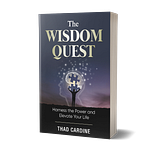“Master Secure Attachment” is a guidebook for parents on how to create secure attachments with their children. It details the importance of secure attachments, how they develop, and the negative consequences of insecure attachments. The text emphasizes three key elements: trust, emotional availability, and responsiveness. It also discusses how to build a secure attachment with children who have neurodivergence, physical disabilities, or who are in blended or adoptive families. The document encourages parents to be aware of their own emotional baggage, to respond to their children's needs rather than reacting, and to prioritize open communication. The text also explores the relationship between secure attachment and a child’s relationship with God, advocating for parents to help their children establish a secure attachment to their Heavenly Father.
Secure Attachment Benefits Throughout Life
Every parent should read "Master Secure Attachment" because it emphasizes the importance of establishing a secure attachment with their child, which has a profound impact on the child's overall well-being, now and in the future.
Secure attachment in early childhood, preferably during infancy, creates a strong foundation for children to develop into emotionally healthy adults [1-3].
A securely attached child feels safe, loved, and secure, enabling them to confidently face life's challenges [4].
Secure attachment is fostered by consistently demonstrating trust, emotional availability, and responsiveness as a parent. This is akin to building a house on a solid foundation that can weather any storm [1, 2].
How Secure Attachment Is Established:
Trust is built when parents reliably meet their child's needs, both physical and emotional [5, 6]. This was also discussed in our conversation history.
Emotional availability means being present and attentive to the child's emotional cues, actively listening to their concerns, and validating their feelings [7, 8]. This concept was also a key point in our earlier conversation.
Responsiveness involves understanding and reacting appropriately to the child's verbal and nonverbal cues, providing timely and effective support [8, 9]. As covered in our previous exchanges, responsiveness is crucial for building trust.
Benefits of Secure Attachment:
Stronger relationships: Children with secure attachments are more likely to have healthy relationships with others, including friends, romantic partners, and their own children [10-12].
Greater resilience: Securely attached children are better equipped to cope with stress, adversity, and challenges throughout life [2, 13].
Improved emotional well-being: Secure attachment promotes emotional stability, self-confidence, and a positive self-image [10, 13, 14].
Enhanced cognitive development: Research suggests a link between secure attachment and better cognitive functioning, including problem-solving skills and academic performance [15, 16].
Importance of Bonding and Attachment:
Bonding is the innate, unconditional love a parent feels for their child [17, 18].
Attachment, however, is directed from the child to the parent, based on the child's assessment of the parent's trustworthiness, emotional availability, and responsiveness [17, 19].
This book guides parents in:
Understanding the differences between bonding and attachment [17, 20].
Identifying and overcoming obstacles that hinder secure attachment [21, 22].
Creating a home environment that promotes trust and emotional security [23, 24].
Navigating the unique challenges of blended and adoptive families [25, 26].
Meeting the attachment needs of children with neurodivergence and physical disabilities [14, 27].
Repairing mistakes and building stronger relationships [28, 29].
Fostering a healthy attachment with God [30, 31].
By understanding and applying the principles of attachment theory, parents can create a nurturing and supportive environment that empowers their children to thrive. This book provides valuable insights and practical guidance for every parent seeking to build a strong and lasting connection with their child.
Secure Attachment FAQ
1. What is attachment theory?
Attachment theory, developed by John Bowlby and Mary Ainsworth, describes the deep and enduring bond between a child and their primary caregiver. It highlights the critical role this bond plays in a child's emotional, social, and cognitive development. The theory posits that children are born with an innate need to form attachments for survival and security. Through consistent care and responsiveness, children develop a sense of trust and safety, leading to secure attachment.
2. What are the different attachment styles?
There are two main categories: secure and insecure attachment.
Secure attachment: Children with secure attachment feel safe and confident, knowing their caregiver is reliable and emotionally available. They explore freely, seek comfort when distressed, and develop healthy social skills.
Insecure attachment: This style encompasses three subtypes:
Anxious-ambivalent: Children exhibit clingy behavior and distress upon separation, yet resist comfort upon the caregiver's return, reflecting inconsistency in caregiving.
Anxious-avoidant: Children appear emotionally distant and independent, suppressing their need for closeness due to a caregiver's unresponsiveness or rejection.
Disorganized/fearful: Children display a mix of avoidant and ambivalent behaviors, often stemming from traumatic experiences or inconsistent, frightening caregiving.
3. Why is secure attachment so crucial for a child's development?
Secure attachment provides a foundation for emotional well-being, influencing a child's self-esteem, resilience, and social competence. It fosters trust, empathy, and the ability to form healthy relationships throughout life. Conversely, insecure attachment can lead to emotional difficulties, behavioral problems, and challenges in forming stable relationships.
4. How can parents foster secure attachment with their children?
Parents can promote secure attachment by:
Being consistently responsive: Attending to the child's needs promptly and with sensitivity.
Showing emotional availability: Being present, engaged, and attuned to the child's emotional cues.
Building trust: Creating a safe and predictable environment, keeping promises, and demonstrating reliability.
Engaging in positive interactions: Spending quality time, playing, and showing affection.
5. What are some challenges that can hinder secure attachment?
Various factors can create roadblocks:
Mental or physical health issues in parents: Stress, depression, or chronic illness can affect a caregiver's ability to provide consistent care.
Unstable or traumatic home environments: Domestic violence, substance abuse, or frequent moves can disrupt a child's sense of safety.
External stressors: Financial hardship, social isolation, or lack of support can impact a parent's emotional well-being and responsiveness.
6. Can insecure attachment be repaired later in life?
Yes, insecure attachment can be addressed and repaired through therapy, conscious effort, and supportive relationships. By understanding their own attachment style and developing healthier patterns of relating, individuals can heal from past experiences and build more secure connections.
7. How does attachment theory relate to our relationship with God?
Just as our early attachments influence our relationships with others, they can shape our relationship with God. Secure attachment can foster trust and confidence in God's love and care. Insecure attachment may lead to struggles with trust, doubt, or feeling unworthy of love. However, through prayer, spiritual guidance, and seeking a deeper connection with God, we can develop a more secure attachment to Him.
8. What resources are available for parents who want to learn more about secure attachment?
Numerous books, websites, and organizations provide valuable information and support:
Books: "Attached" by Amir Levine and Rachel S.F. Heller, "Parenting from the Inside Out" by Daniel J. Siegel and Mary Hartzell
Websites: The Karyn Purvis Institute of Child Development, The Attachment Project
Organizations: The American Psychological Association, local parenting groups, and family therapists specializing in attachment theory













Share this post